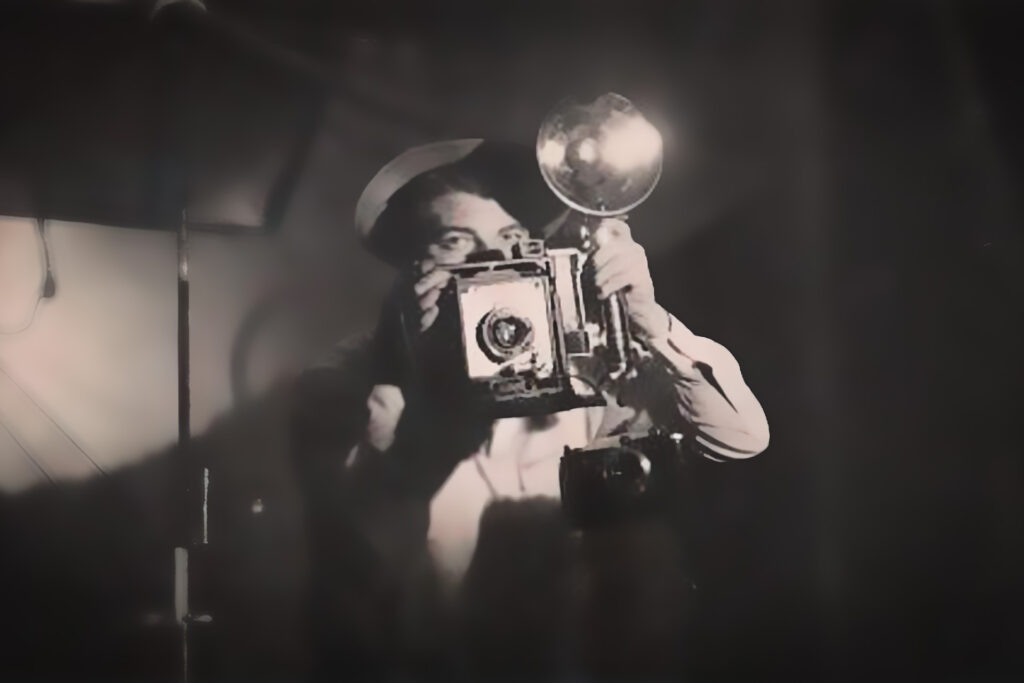A Palestinian photographer, born in Jerusalem in 1926, and died in 1974. He is considered one of the founders of photojournalism in Palestine. He documented the Nakba and accompanied the leaders of the resistance in their battles, most notably Abd al-Qadir al-Husseini. His archive was looted in 1948, and his photographs are still detained to this day in the archives of the occupation army. Israeli.
Birth and upbringing
Khalil Rassas was born in 1926 in Jerusalem, and began photographing at the age of 18. He and his brother Wahib took the profession from their father, Ibrahim Rasas, owner of the “Photo Rasas” studio in the Maman Allah neighborhood, near Bab al-Khalil, a neighborhood that gathered many photographers and studios at the time, who contributed to documenting Palestinian history in the mid-1940s.
Looted photo archive
By the time of the Nakba in 1948, the armed Zionist movements looted the neighborhood’s studios and archives, and they were kept in the archives of the Israeli army.
The occupation wanted to consolidate its idea of Palestine as “a land without a people for a people without a land,” a claim promoted by the leaders of the Zionist movement. For this reason, it not only stole the land, plundered its resources, and exterminated its people, but also carried out genocide of another kind on the Palestinian archive, which documented Social, militant, political, cultural and other life in various cities of Palestine.
The Zionist gangs stole the archives of the Rasas family, the archives of Hanna Safiya, Khalil Raad, the dean of Palestinian photographers, Ali Zaarour, and others who documented the daily lives of Palestinians, until the mid-1940s, before Palestinian photography turned into a process of documenting battles and being a witness to the crimes of the occupation.
Resume work
Later, Ibrahim Rassas and his son Khalil opened another photography studio in the Bab al-Amoud area, and while the father was busy photographing people, opening films, and printing photos, Khalil was documenting the battles and struggles of the Palestinian revolution, and accompanying the resistance fighters wherever they were. He also joined the Palestinian resistance and accompanied the martyr Abdul Qader al-Husseini, leader The Jerusalem front, which made his work special, as his activity was not limited to the city, but rather he went to the hotspots of clashes, in the mountains, and the areas adjacent to Jerusalem.
Khalil Rasas worked for the American Associated Press and the Egyptian Al-Hilal newspaper, before he traveled to Saudi Arabia and continued his work in photography.
Following the setback in 1967, Rassas returned to Jerusalem and opened a photography studio on Al-Zahra Street in the city, where he continued until he passed away.
Uncovering the looted archive
The Israeli army archive includes two large collections of bullet works, and another collection taken in the second half of the 1940s, including a collection of photographs of the city of Jerusalem and resistance actions in the mountains and around the city, which were stolen by the officer in the occupation army, Amos Framan, and given to his son, who revealed them in 2000.
In 2002, the occupation released another set of photos of bullets, which were called “spoils,” according to the classification of the army archives.
There are other photos that the occupation army classified as archives found in the pocket of an Arab martyr, in early May 1948, and included photos of martyrs and wounded, and demonstrations that took place in the city.
Death
Khalil Rasas died in Jerusalem in 1974 after a heart attack.



